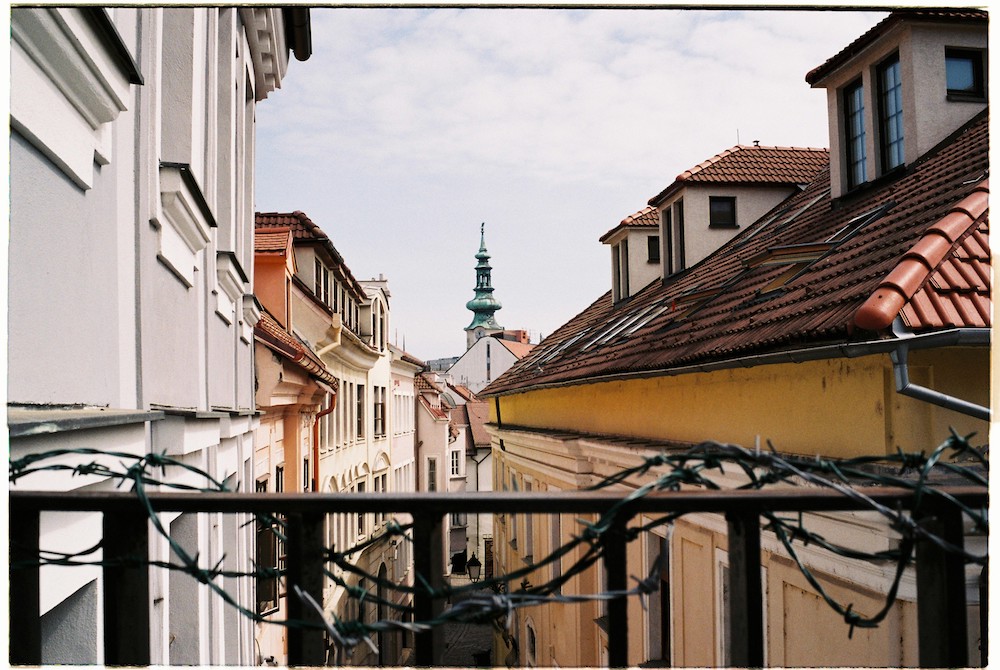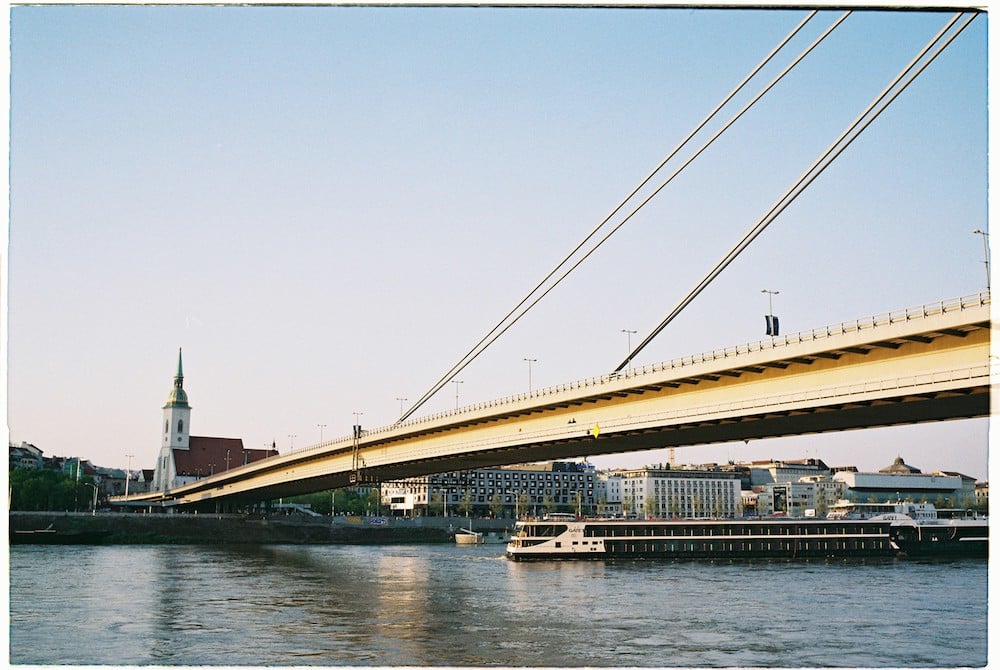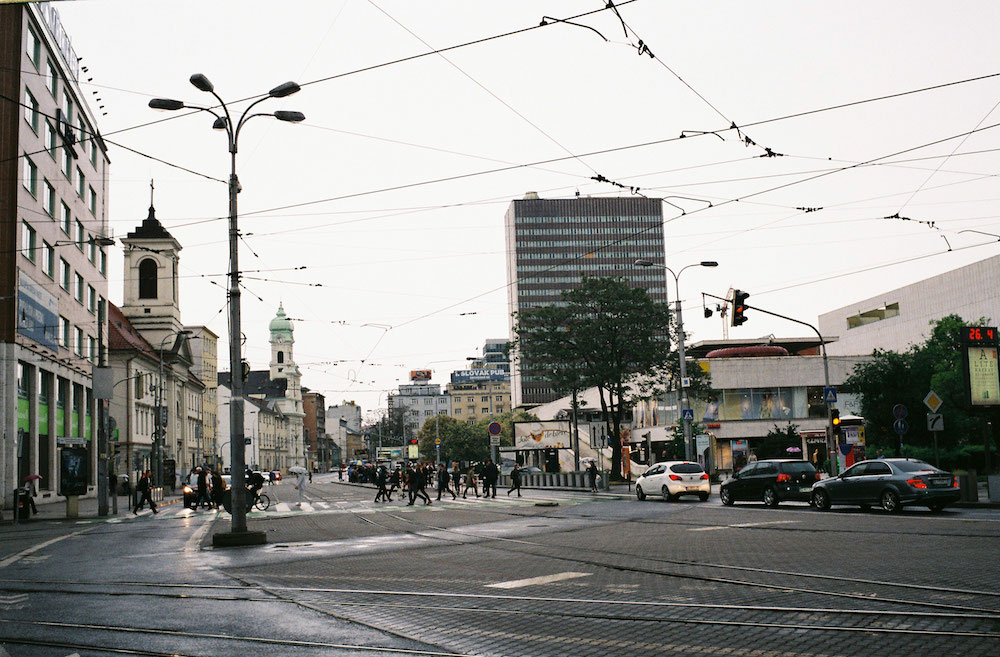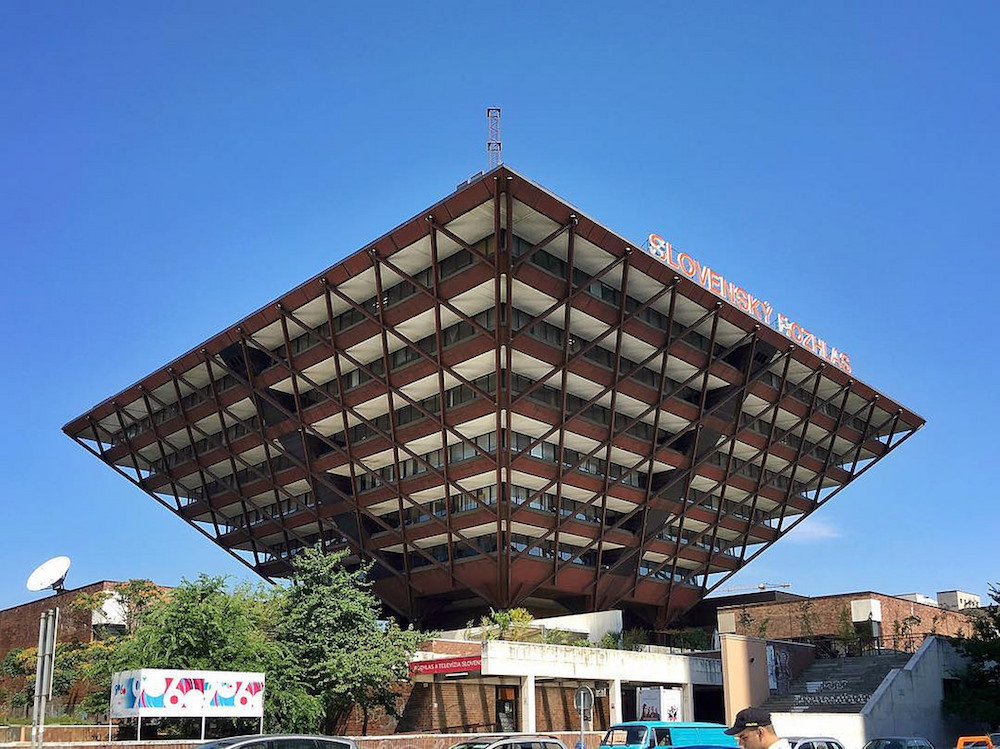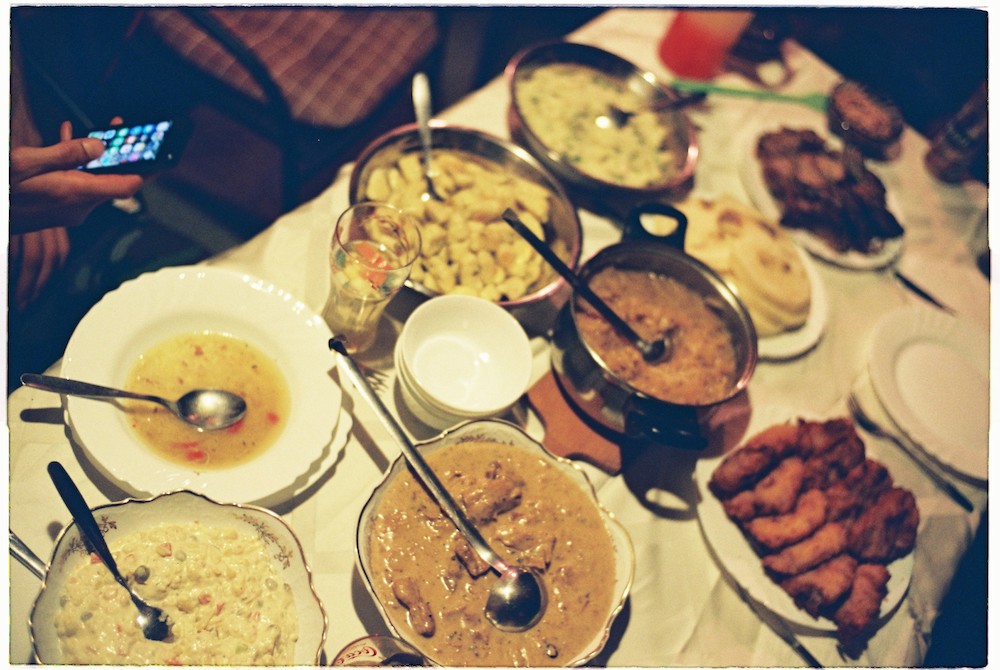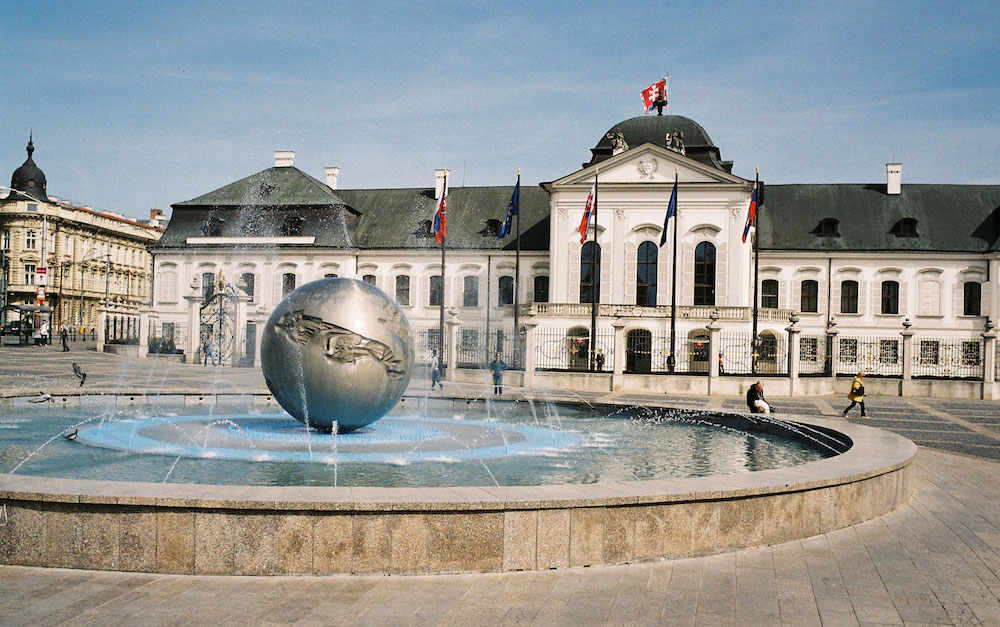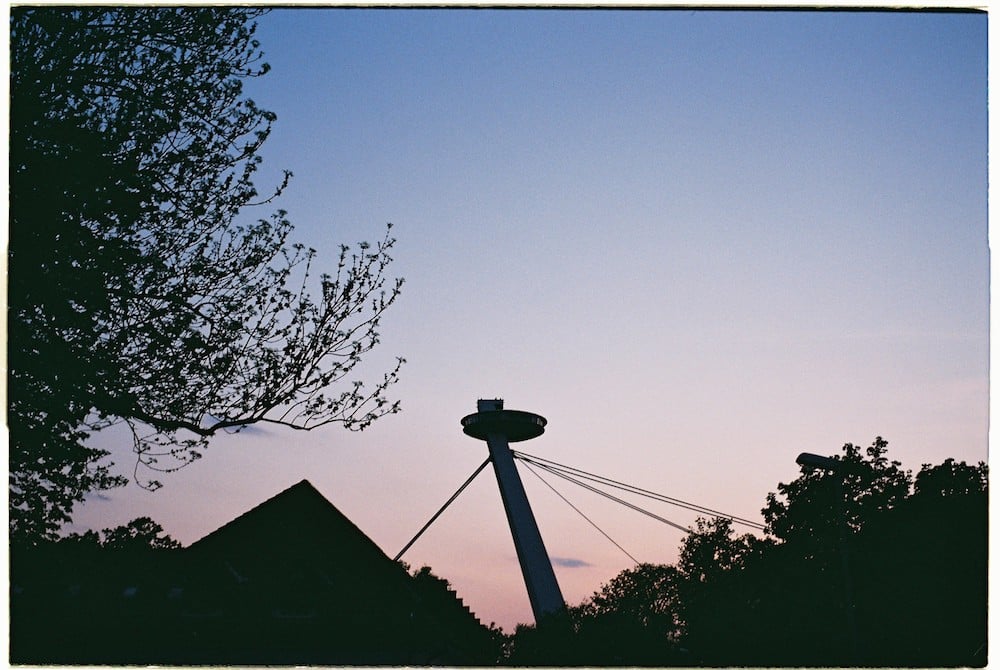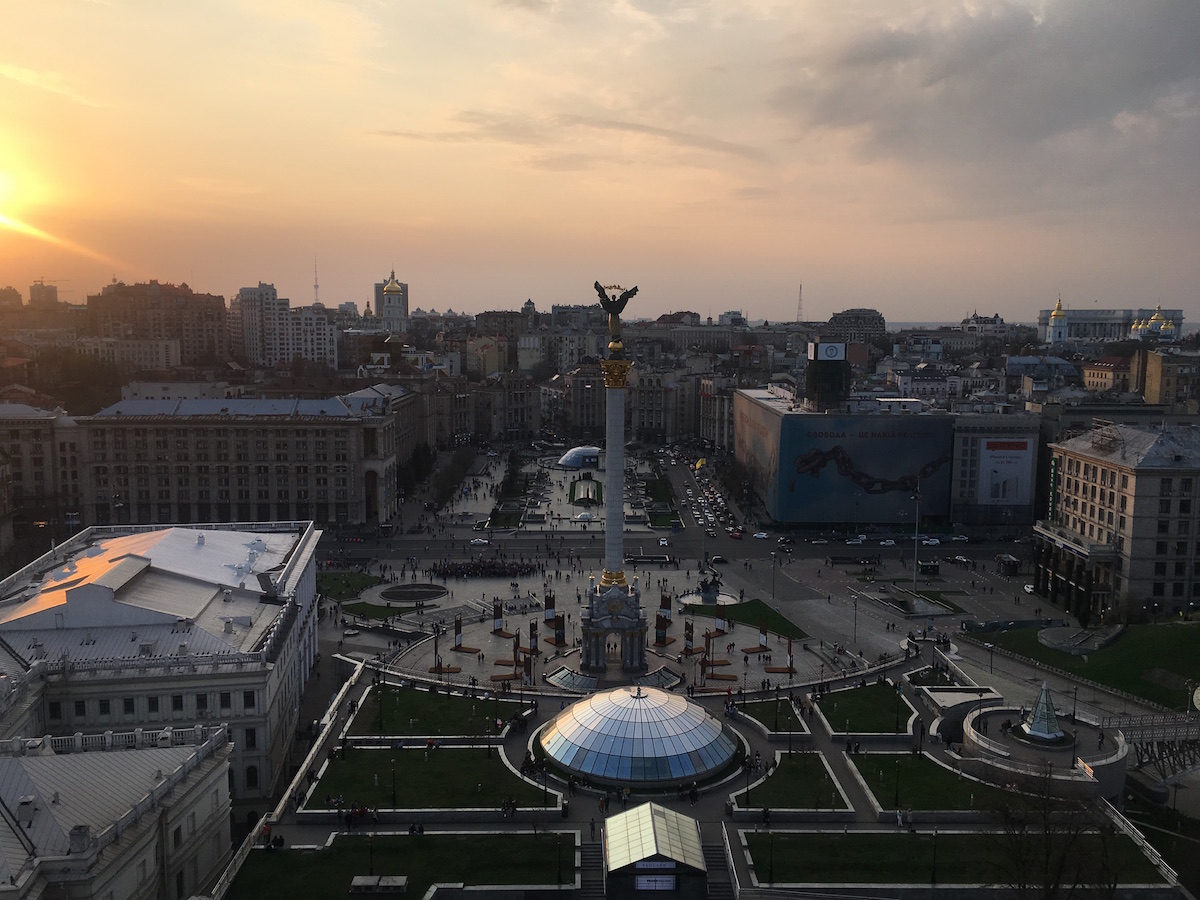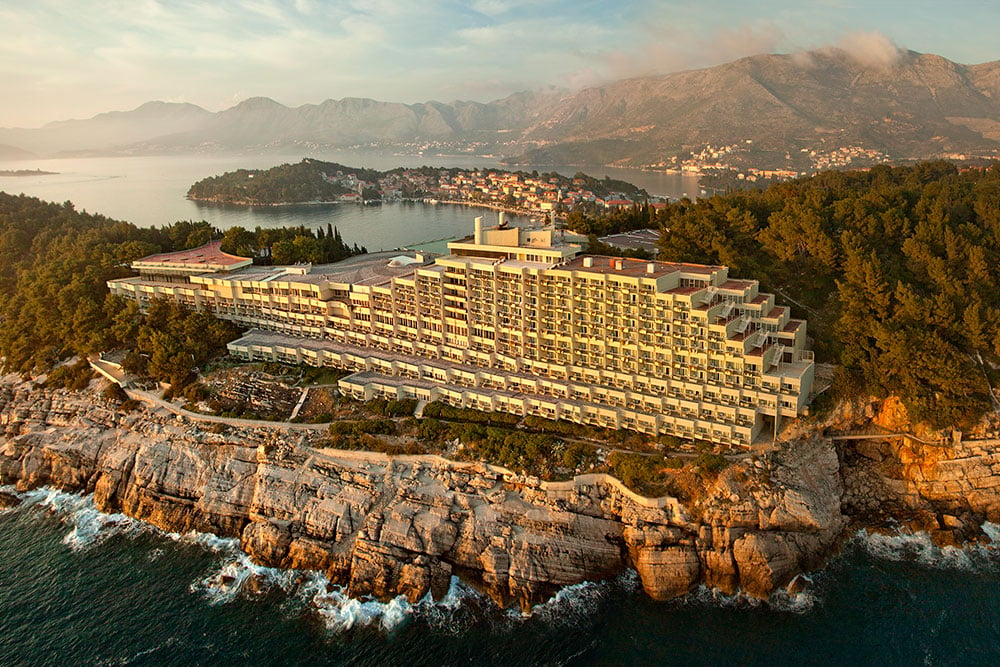24 hours in Bratislava: what to see and do in Slovakia’s stylish capital
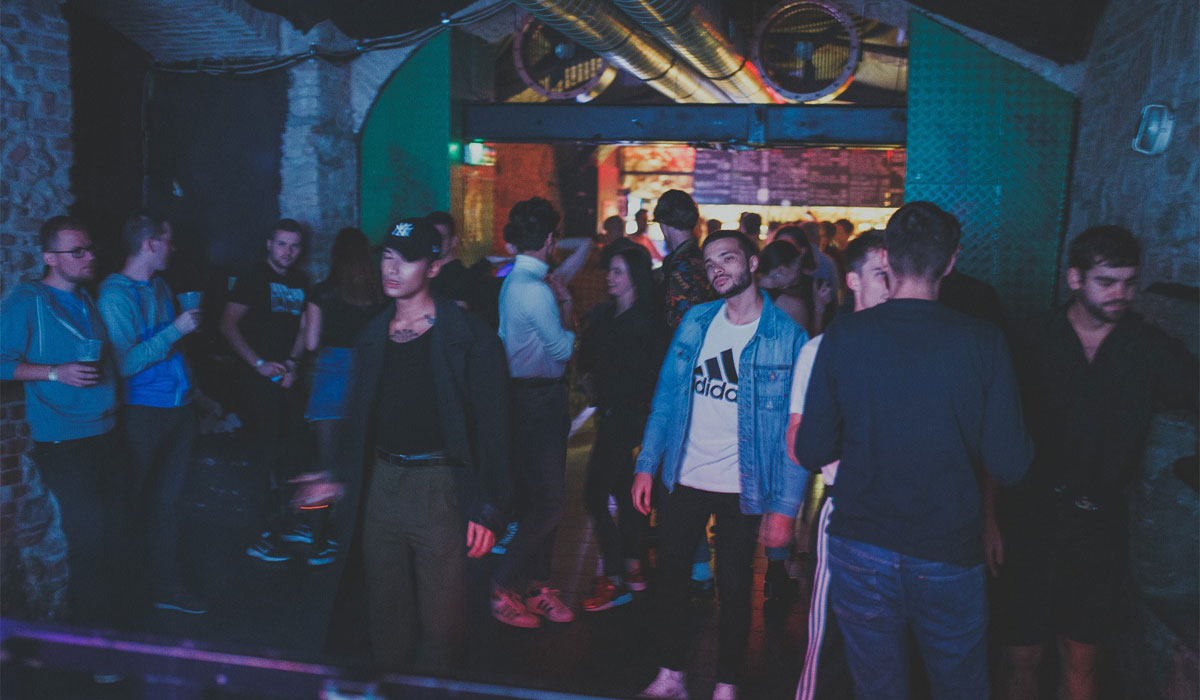
One of Europe’s most affordable city breaks, Slovakia’s capital is also an unexpected summer destination, with plenty of peaceful lakes to relax by after a morning of selfie-coffees and communist-era relics
25 years ago Bratislava fought for, and won, a fresh start. Until 1993 the city had been a part of Czechoslovakia, behind the Iron Curtain. A lot has changed since then. “Brain businesses,” which require professionals such as creative engineers, programmers, and designers, are flourishing in the capital, and employ almost 20% of the working-age population. Bratislava strides out ahead of all the European capitals with this figure. What’s more, you need only to drive outside of the city centre to experience Slovakia’s lush lanscapes (the Tatras mountains in the north are a must-see) and long-standing traditions: heavy meals to sustain you through the cold winter, and hunting in the dense forests. Though one of the less familiar stops on the river Danube (or the Dunaj as it is known in Slovakia), there are many reasons to spend 24 hours in Bratislava.
“Bratislava got fancy” was the refrain I remember most of all from our ten-day visit, repeated by two friends who grew up in the city but have since moved to Barcelona and Prague. The steep walk up Zámocká street to the city’s most-recognised landmark, the Bratislava castle, is punctuated by the kind of café that might have been born in Shoreditch in a frenzy of divine inspiration, after some vintage industrial lights were hooked up above aged salon bric-a-brac. It’s a look that has been replicated across much of the New East, in Zagreb, Tbilisi, and Riga, to name just a few examples — though that’s not to say there aren’t new takes on this tried and tested formula. Café Five Points (Panská 23) is pioneering the selfiecchino, a coffee with the customer’s image printed on the foam. A great way to start your 24 hours in Bratislava would be to grab your trend-forward coffee and cake at Kava.Bar and then to walk up the hill to the hrad, or castle, and breakfast with a view of the city, and the Dunaj below.
Just over the river, large socialist realist housing blocks loom in the Petržalka district. Nicknamed paneláky by locals, after their pre-fabricated panels, they have been painted in colours that nod towards the surrounding natural landscape. Murals have also been added to the sides of the blocks, all in an attempt to disrupt the uniformity of the microrayon (or micro-district).
Once you’ve drowned your caffeinated visage, like a contemporary Narcissus, you might like to check out more communist architecture. Starting at Slovak Radio, a rust coloured, upturned pyramid which was listed as one of the ugliest buildings in the world by The Telegraph, there’s a convenient route that will take you through the Old Town, and across UFO bridge and beneath its striking tower. Once over the bridge you end up in Petržalka, and next to one of the city’s many shopping malls.
Another great and perhaps surprising activity on offer in Bratislava is the Wakelake on Zlaté Piesky. The city has a number of nice lakes, perfect for hot summer days. Wakelake is somewhat more extreme than your average lake, offering wakeboarding and flyboarding (essentially where jetpacks are strapped to your feet). We visited Veľký Draždiak in Petržalka on one of mid-April’s unusually hot days to cool down and find some shade.
After you’ve immersed yourself in communist architecture and lakeside activities, it’s probably time to eat and drink. Compared to London, smoothies are fairly cheap in Bratislava, but the real draw are all the beetroot-based drinks. You might also like to take advantage of the frequent programme of street food events, such as the regular stalls outside Old Market Hall. For traditional Slovakian food, try Meštiansky pivovar (Drevená 575/8), which is packed full each time we visited. I recommend trying the kapustnica (cabbage soup), a good, authentically Slovak choice.
You would do a lot better befriending your Airbnb host and seeking out some proper home cooking. It’s always difficult to know the etiquette when visiting a new country: do you eat all of the food provided, to show how enjoyable it is, or do you leave a bit on the plate, to show you have been fed enough? It would not be possible to eat the quantities of delicious food we were served on Slovak family tables. Duck and deer shot in the forests outside the city, dumplings, sauerkraut, sweet juice made with nettles and ginger, pancakes, poppy cake, and their own version of a jam doughnut, powdered in sugar and sprinkled with poppy seeds. Kofola, a Czechoslovakian take on Coca Cola, which was scarce until the 90s, is a great accompaniment to any meal.
As evening approaches skirt the tourist-heavy city centre and head to Beblavého Street, where locals gather at the confluence of bars, At the Devil’s and Vydrica among others, and spill out into the streets. Occasionally the police will come by and stop people from drinking outside but this is generally a good spot to have a drink, just up from the river. At the end of the night you could watch the sunset from Slavín Hill. The memorial commemorates the Soviet soldiers who died liberating Slovakia’s towns and cities from the Nazis. The place names ring the monument in granite relief, each stating the date of the battle, and topped by a large star: Bratislava, Dukla, Prešov, Košice, Liptovský Mikuláš, Zvolen, Banská Bystrica, Lučenec, Komárno, Nitra, Žilina.
For those who want to make the most of Bratislava’s natural scenery, Devín Castle is a fascinating destination not too far from the city. The rivers Morava and Dunaj meet outside the castle, where another memorial stands, the Gate of Freedom. It commemorates the Czechoslovakians shot dead trying to swim across the river into Austria and the west. If this dismal foray into Bratislava struggles to get past the city’s communist history, it is not too surprising. The architecture from this period looms large in much of the writing about the city; so much that it feels inescapable. But the last hundred years are of course just a footnote in the long, rich, and complex history of Bratislava.
